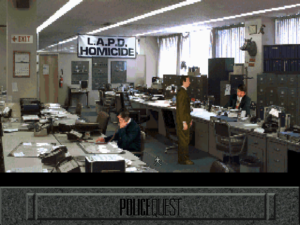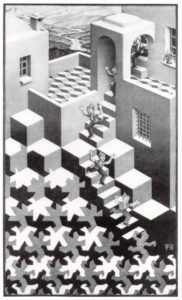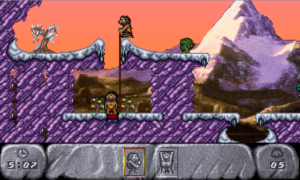PQ4: Score
Just a short session this time, so let’s talk about something that has pretty much nothing to do with the game content: the scoring system. I’ve said before that I don’t really care about getting lots of points in games unless it affects gameplay in some way — for example, by giving you extra lives — or unless the game has achievements of some sort built around it, explicitly or implicitly. For an adventure game, the simplest sort of implicit achievement is the full score. Typically, you only get points for solving puzzles, advancing the plot, performing significant actions in character, and/or discovering easter eggs. Opportunities to do any of these things are limited, so it’s possible to do them all, and to a completist like myself, that’s appealing: it means that I’ve played the game as thoroughly as possible and seen everything it has to show me. If the maximum score is a nice round number like 1000, all the better.
Now, a lot of the Sierra games didn’t have nice round numbers for their maximum scores. One gets the impression that the authors just assigned points willy-nilly and counted them up after the fact. In fact, in one case they miscounted, leaving the maximum score as reported by the game tantalizingly unachievable. PQ4 avoids this problem by not giving any indication of what the maximum score is. (Although if I wind up with 998 points at the end, I’ll be suspicious.)
Still, despite this lack of feedback, old habit compels me to try to get all the points out of every scene. Sometimes the game makes this difficult. For example, in the opening crime scene, there are a couple of young men hanging around just outside the perimeter. If you talk to them and take notes in your official police notebook, you get two points. They don’t have any useful information, but you get points as a reward for thoroughness. If you show your badge first, you get another two points, a reward for following correct procedure. But if you decide to spend time inspecting the body or something first, they leave after a while, depriving you of these points — a punishment for guessing wrong about the game mechanics. No doubt I’ve already missed some points of this sort, and without knowing the maximum score, I’ll never know.
Except of course that I can know. We’re in the age of the Internet now. Walkthroughs and point lists are easily accessible online. (Even in 1993, this was starting to be the case, but the web has made game cheats so much easier to find.) Even in the old days, there were recourses. I personally went so far as to hack into some Sierra games in pursuit of the maximum score, decompressing the game resources and looking for anything unfamiliar, be it an animation or a line of dialogue. In one case, I even delved into the code — I never really decoded them completely, as SCI scripts are distributed in a byte code format (kind of like Java), but I was able to identify some byte sequences that were always found around numbers corresponding to score increases, and look for rooms that had more of those sequences than I knew about.
But that was long ago, when I had more free time, and when point-and-click adventures were still rare enough that I felt the need to squeeze all the entertainment I could out of them. (And yes, dissecting a game counts as entertainment. Sometimes it’s more fun than playing it.) I still have the tools I wrote to accomplish this, so I may wind up using them on PQ4 — it seems like a more honorable approach than reading someone else’s walkthrough. But there’s a good chance that they won’t work; Sierra did change how they packed their data once in a while. Some of the code from these tools was eventually folded into the FreeSCI project (itself now folded into ScummVM), so I may give that a look too. But I don’t know how much effort I’ll want to devote to this when the answers I’m trying to wring from the code can be more easily obtained at GameFAQs.
 Comments(1)
Comments(1)

